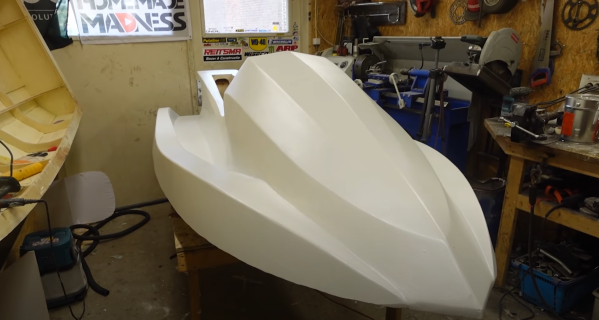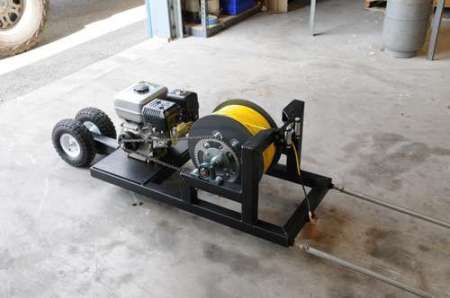There is an age-old tradition among hackers of just making it yourself. Whether the real thing is too expensive or you think you can make a better one, the itch strikes, and it can quickly spread. [Homemade Madness] has quite the itch as he builds his own jetski.
What is a jetski but a boat with a shell on top? In an earlier video, he created a boat out of plywood and, after the usual steps of fiberglass and sealing, was proud to float around in his relatively normal-looking boat. But now that he had a working bottom, it was time to return to CAD. He printed out templates for all various shapes he would need, each labeled with a different designator, and glued them to the plywood. No fancy CNC here, just a steady hand and a jigsaw. We love the professional build instructions he compiled for himself that detail in LEGO-like quality exactly how each piece slots into where and in what order to do them. In addition to the top layer of the jetski, he also designed a stand for the boat to rest on while he made it, which is just going the extra mile. A ceiling-mounted winch made it easy to lift the ship into position. Next, he connected all the various framing pieces with PU glue. Thin plywood acted as cladding on top of the skeleton. Filling, sanding, and fiberglass overlaid the structure, making it waterproof. More sanding and some primer later, and it was ready for another water test.
He designed a version with an outboard motor, but he’s trying to build one with a built-in jet drive. So we’re looking forward to seeing the next step and him flying around on his custom watercraft. But what he has already done is quite impressive. If you’re looking for something a little smaller to pull you around the water, why not take a look at this little 3d printed tug boat? Video after the break.
















